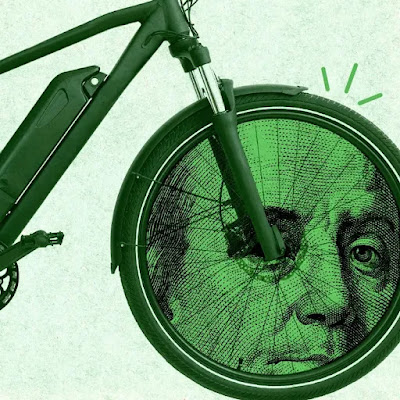Last night, Donald Trump held a rally celebrating his first 100 days in office. As he is wont to do, he made exaggerated or simply false claims about the positive effects of his actions (or inactions) during that time.
Of course, since he was in Warren County, Michigan--literally next door to the automotive industry capital--he talked up the tariffs he's imposed. All along, he's claimed they would bring manufacturing back to the US. During his speech, he defended his steep tariffs on cars and auto parts--just hours after the White House announced it was reducing them.
A bicycle company might provide one of the best examples of why he backpedaled (this will seem like a bad pun in a moment) on his earlier actions. Most of you, I imagine, are not riding Kent bicycles, but you may have had--or your kid might be riding--one. You may have assumed, as I did, that they are made in China or some other low-wage country.
In 2014, however, the Bicycle Company of America--Kent's parent, which has also made and sold bicycles under the BCA brand--has produced bikes in its Manning, South Carolina facility. Notice that I used the word "produced:" Although the machines produced in Manning bear "Made in USA" labels ("with domestic and imported parts" appears in smaller type), almost everything on the bikes--including the frames--comes from someplace else. For example, the rims, hubs and spokes come from Asia but are assembled into wheels in the South Carolina plant. And because the headsets and crank bearing races are pressed into the frames--and those frames are painted--in the same facility, they qualify for the label.
That scenario puts Kent and other bicycles made by BCA in a bind: They have to pay higher prices for all of those parts, but they can't pass those costs on to customers unless bike prices are increased outright to "levels consumers may not want to pay" said Kent chairman Arnold Kamler.
According to Kamler, the tariffs and duties total around 175 percent of pre-tariff prices. As a result, he said, the company stopped importing parts--and bicycles--from China on 18 April. Unless those tariffs are reduced, as they were for auto parts, in the next 30 days, Kamler says "we will need to suspend production later this year."
Since very few bicycle frames--save for custom and extremely high-end models--and virtually no parts--save for small-batch varieties of hubs, bottom brackets, headsets and pedals from the likes of Phil Wood, Chris King, White Industries and other small companies--are made in the US, it's easy to imagine that shops, distributors and online retailers could experience a run on current inventories. And, when those are exhausted, bikes, parts and accessories could become very difficult to find and expensive. In other words, we might see a re-run of what the cycling world experienced during the worst days of the COVID pandemic in 2020-21.


































